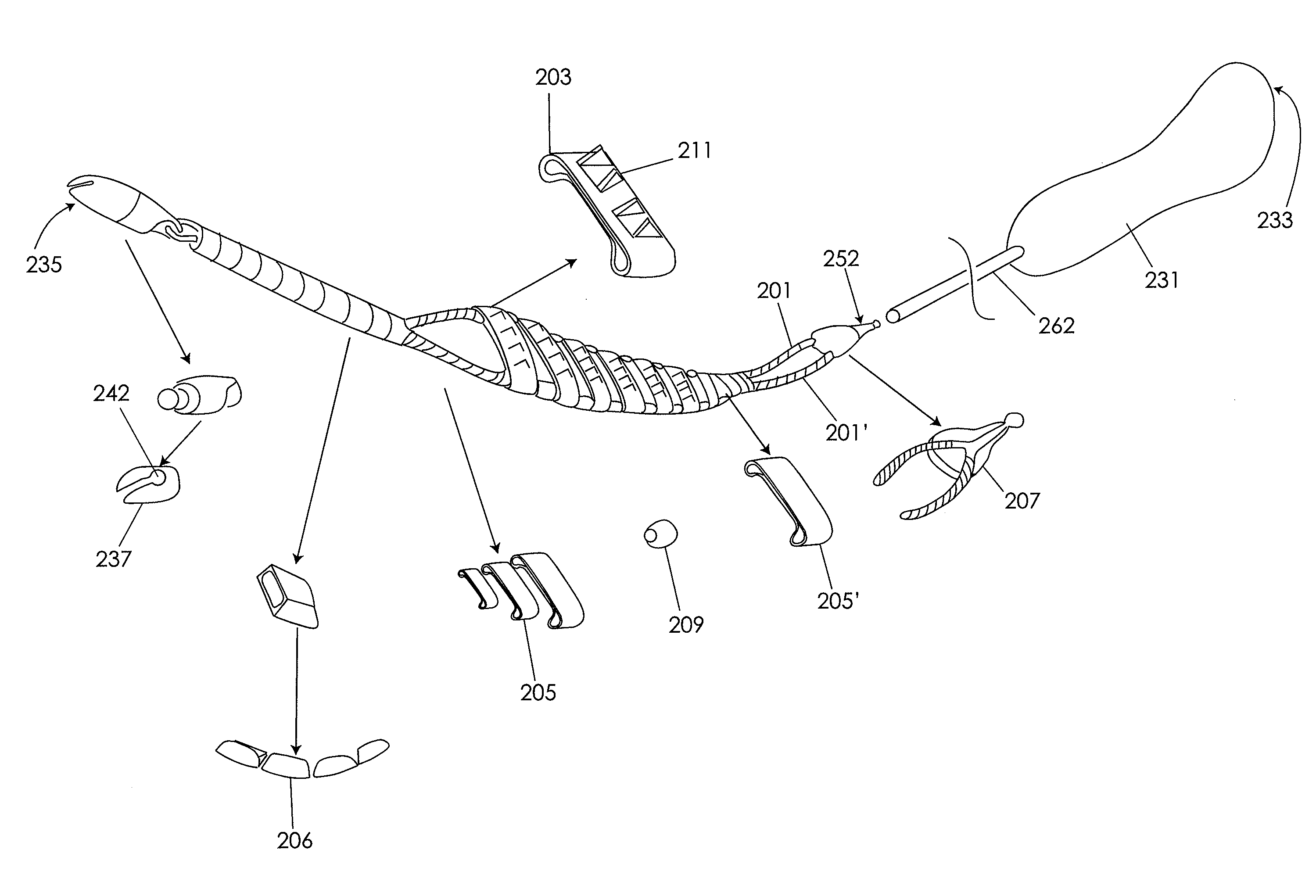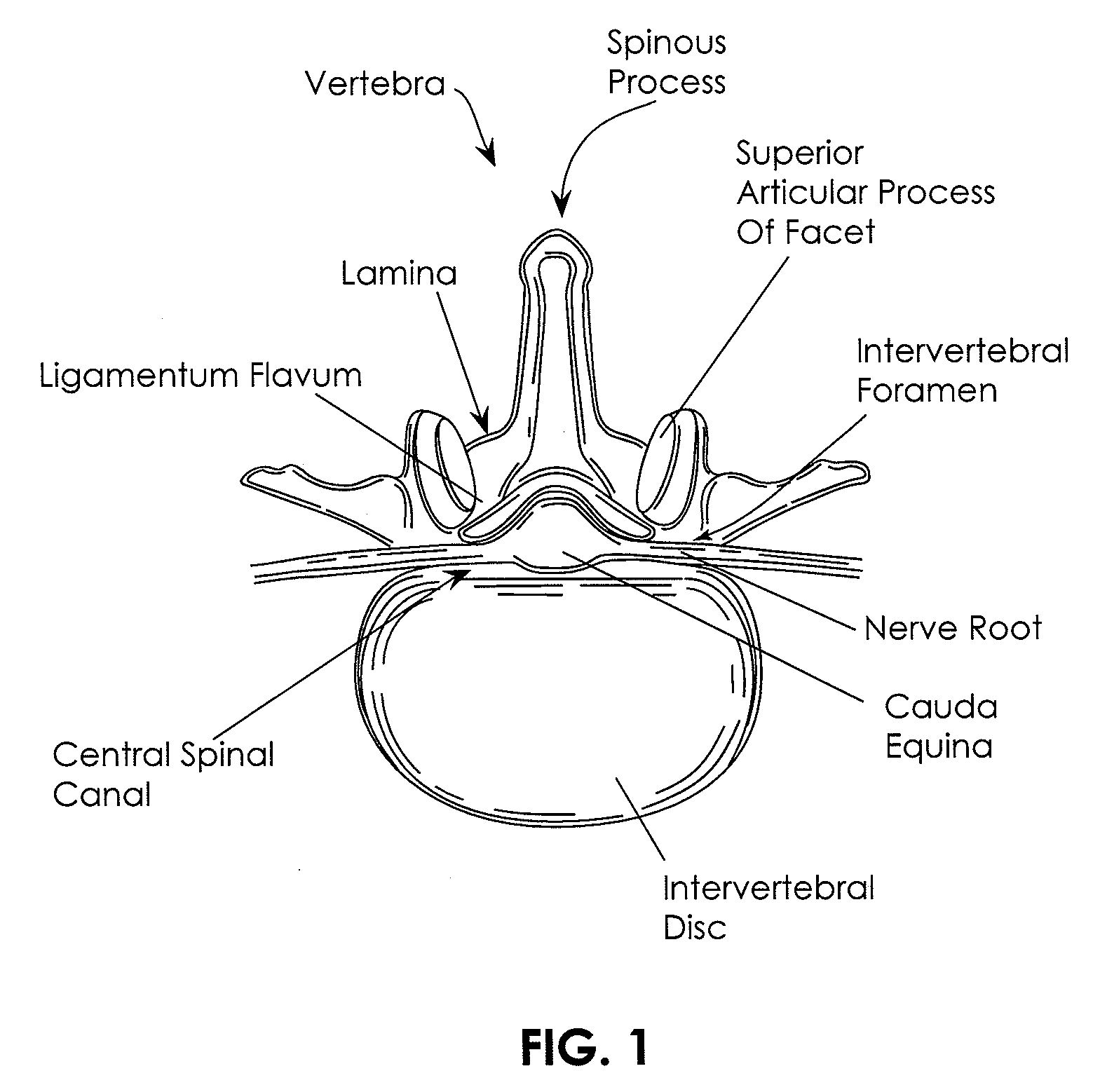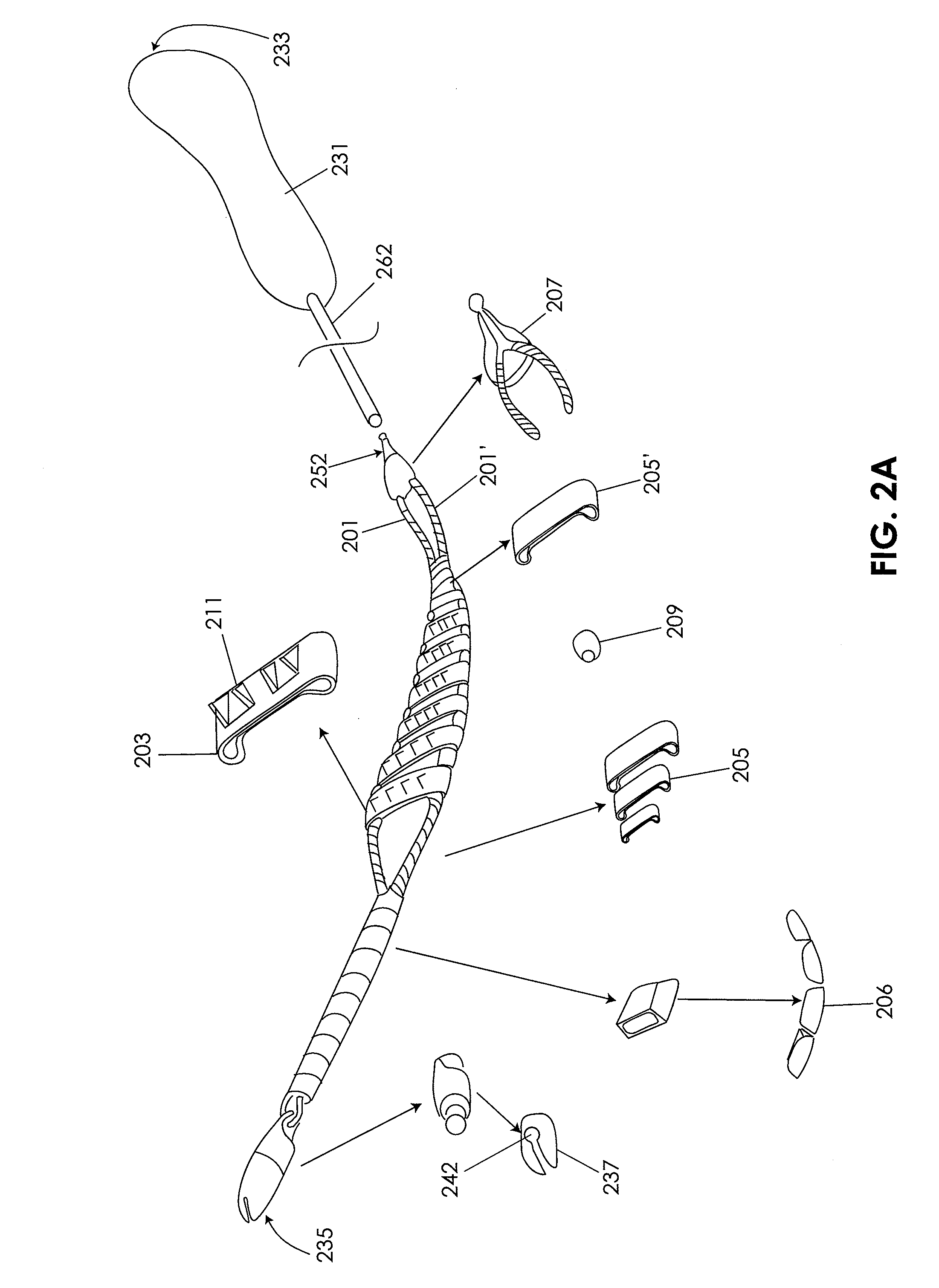Tissue modification devices
a tissue modification and flexible technology, applied in the field of medical/surgical devices and methods, can solve the problems of difficult to modify certain tissues to achieve a desired effect, more technically challenging procedures, and reduced or even no direct visualization, and achieve the effect of not inhibiting the flexing or bending (flexibility) of the elongated body
- Summary
- Abstract
- Description
- Claims
- Application Information
AI Technical Summary
Benefits of technology
Problems solved by technology
Method used
Image
Examples
Embodiment Construction
[0105]Various embodiments of tissue modification devices and systems, as well as methods for making and using tissue modification devices and systems, are provided herein. In general, a flexible tissue-modification device as described herein is configured to remove tissue from a patient. In particular, these tissue-modification devices may be configured to decompress spinal stenosis. These devices typically include a flexible elongate body that extends proximally to distally (proximal / distal), and is configured to be inserted into a patient so that it extends around the target tissue, so that it can be bimanually pulled against the target tissue by applying tension to either end of the device. Thus, the device may be extended into, through, and / or around a spinal foramen. The device is flexible in at least one plane. For example, in variations in which the device has an elongated ribbon shape that is long and flat with a width greater than the thickness, the device includes a first ...
PUM
 Login to View More
Login to View More Abstract
Description
Claims
Application Information
 Login to View More
Login to View More - R&D
- Intellectual Property
- Life Sciences
- Materials
- Tech Scout
- Unparalleled Data Quality
- Higher Quality Content
- 60% Fewer Hallucinations
Browse by: Latest US Patents, China's latest patents, Technical Efficacy Thesaurus, Application Domain, Technology Topic, Popular Technical Reports.
© 2025 PatSnap. All rights reserved.Legal|Privacy policy|Modern Slavery Act Transparency Statement|Sitemap|About US| Contact US: help@patsnap.com



